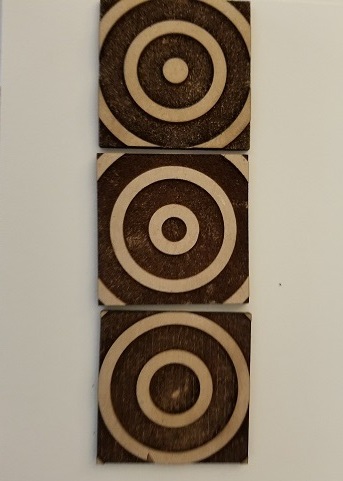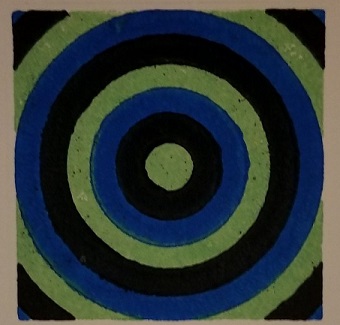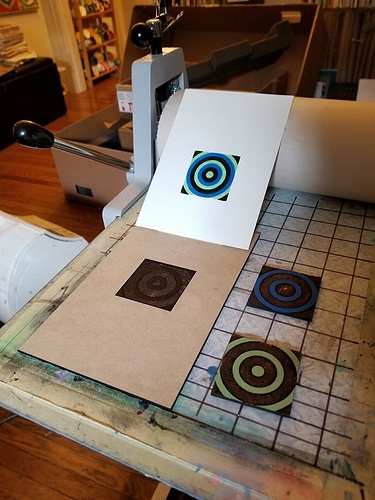For my first project I decided to test the ability of the machine to create precise multi-plate prints using my small printing press
Multi-color prints are challenging with a hand driven press because it requires absolute precision across multiple blocks from design, to carving, and then placing the block and paper to run through. It’s not just about putting the color where you want it, but about putting the color where it needs to be in relation to the other colors.
The Glowforge can obviously help with a lot of that.
Whenever I’m learning something new I always default to circles, as they are simple and quick, and always nice to look at.
I started by generating a basic series of concentric circles using processing to create nice, exact shapes. I then used Photoshop to create 3 images, 1 for each color of the final print. Then inkscape to convert to SVG (in the future I will use Illustrator since Inkscape uses an arbitrary PPI that changes the physical dimensions of the cut, which is not welcome in this process).
I engraved the images, and cut out the small blocks I’d be using to print on draftboard.

Finally I cut a guide with a hole in it for the plates to ensure precise registration and that the paper was level with the printing surfaces.
Here’s the setup on the bed of the printing press:
Here’s a close-up of the final image (taken with a phone camera, in shadow, but oh well). 
Note how well the different lines match up. The only overlap of colors is due to some ink bleeding through, which is a printing issue, not a carving issue. The machine did its job perfectly, and the draftboard worked fine as a wood block- which is good since it’s a good amount cheaper than a similar chunk of linoleum or printing wood would cost.
I’m excited. I haven’t even tried any 3D assemblages or even different materials, but just this functionality opens up so many possibilities to work with it could keep me occupied for the next year. The level of detail available, and the precision it allows will let me do some amazing things that this little Jasper Johns rip off doesn’t even hint at, even at incredibly small scales.



